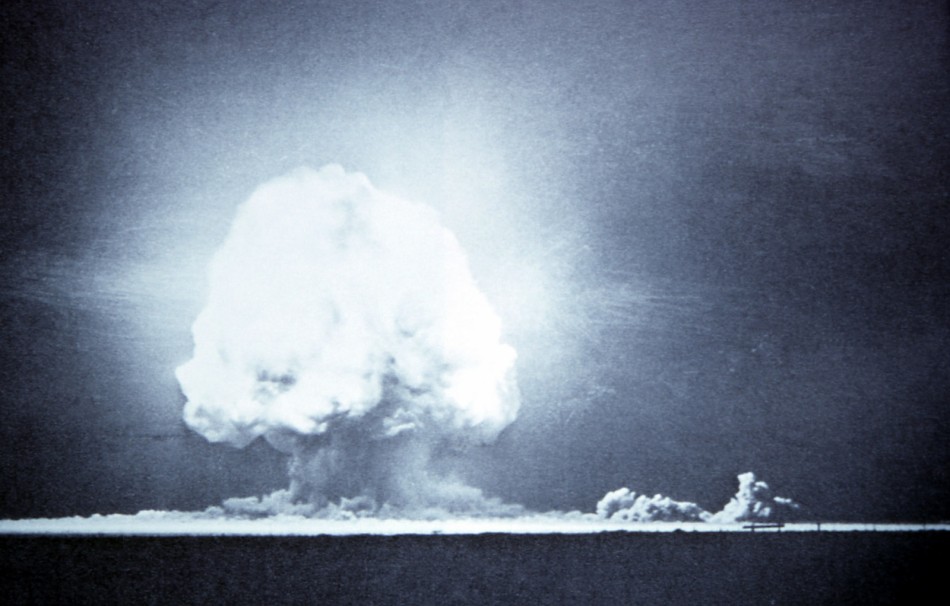
Past Alive, Trinity Site 2011
The Trinity Site opens only twice per year for public tours. Because, today, it’s “now only mildly radioactive,” you can tour the site (where the first atomic bomb was tested on July 16, 1945) the first Saturdays in April and October each year.
Near Socorro, New Mexico, the Trinity site—for reference, approximately 160 miles south from Santa Fe—seems to rarely attract the attention of the locals, or artist community in the area. And, talk of the site doesn’t often come up in conversation. Although, one would think, being such an important moment in history—actually marking the beginning an era of nuclear power—that more New Mexicans would take interest in the Trinity Site. Further with the Los Alamos National Labs, too, it’s curious that the topic doesn’t find its way into more contemporary artist’s work in the area.
There are, however, noteworthy artists from New Mexico, who have excavated the topic of nuclear power and sites like Trinity in their work.
Cady Wells, 1904-1954,—artist originally from the east coast who fled a more traditional upbringing and brought his love of painting with him to New Mexico—investigated the tragedies of nuclear weaponry. Some of his later paintings depict large mushroom clouds. Having served in the war, after being a painter for several years, he had a particular melancholic lens on the incidents surrounding the Trinity Site. (More on Cady Wells, “Southwestern Modernism and Cady Wells”.)
Contemporary artist Joanne Lefrak also looks to sites like Trinity for inspiration. Lefrak for instance visits sites such as these, and reinterprets the history through etching on Plexiglas. (See more on Lefrak’s work here.)
For Lefrak “no landscape is empty,” and “nothing is a clean slate,” which she equates to apperception. Explained by French philosopher Maurice Merleau-Ponty, apperception inextricably binds all perception to its context. Lefrak, in turn, doesn’t separate the quiet wilderness of today’s Trinity Site from the intensity of its yesterday. Quoting Faulkner, Lefrak says, “The past is never dead.”

More information on the Trinity Site available here.
